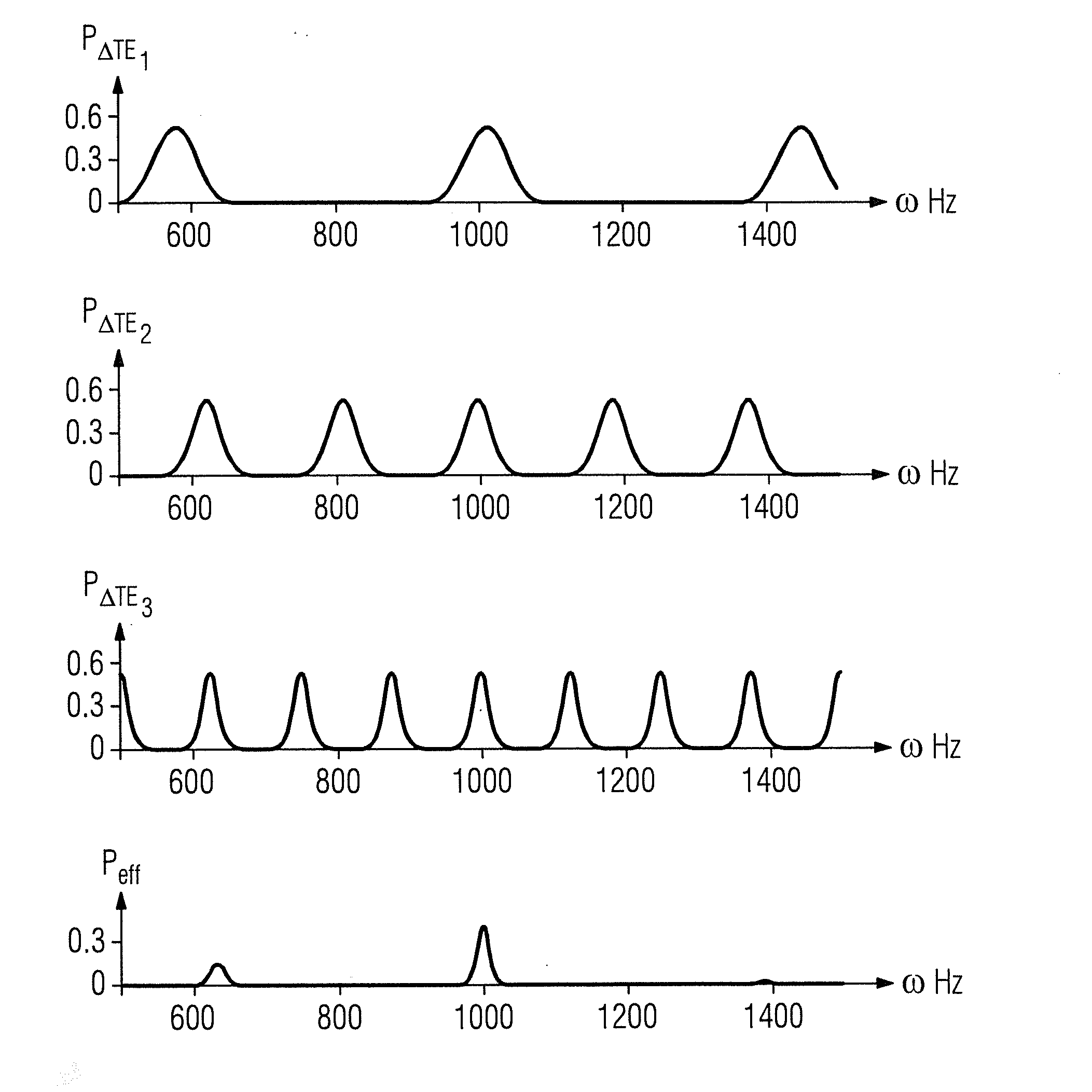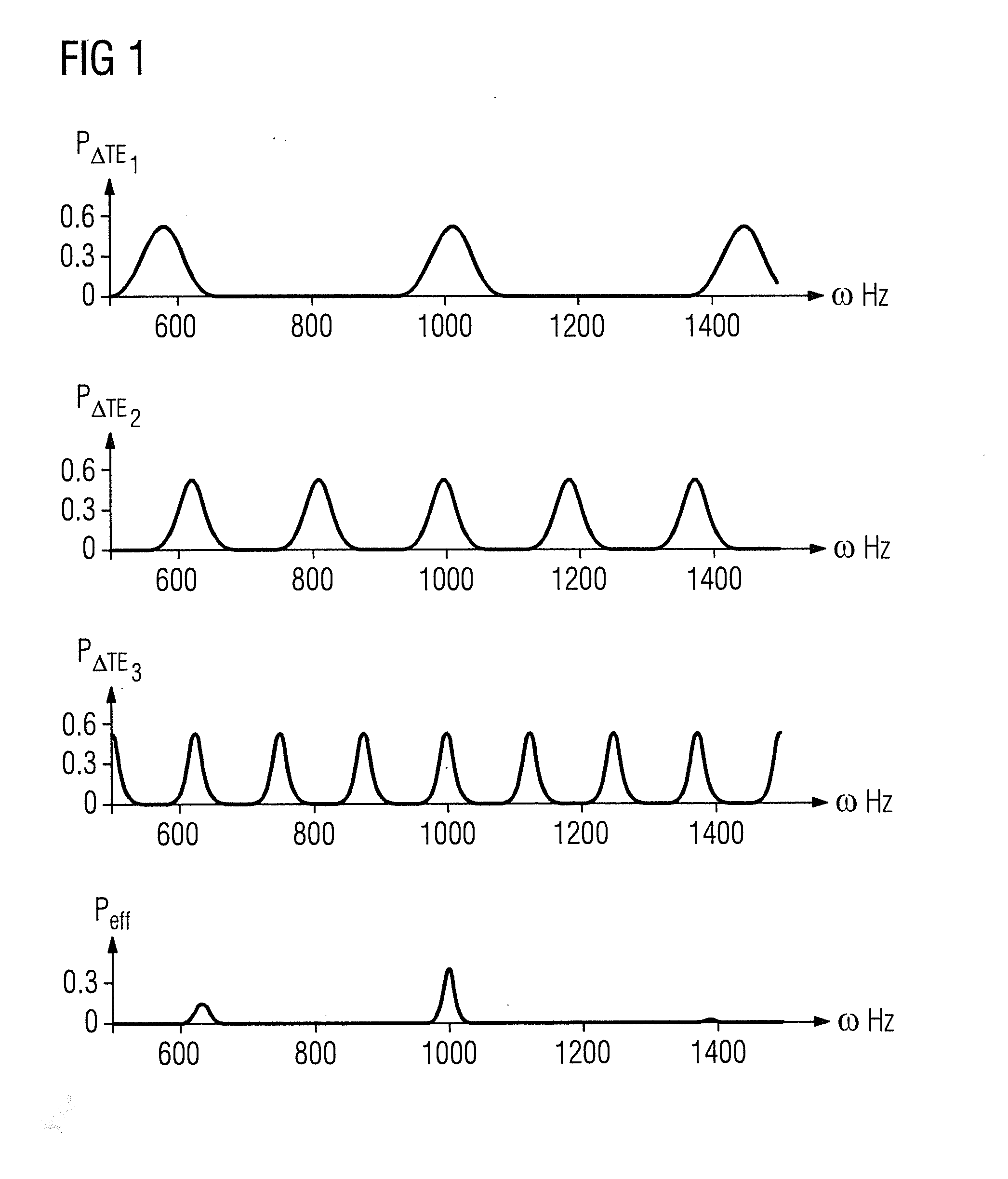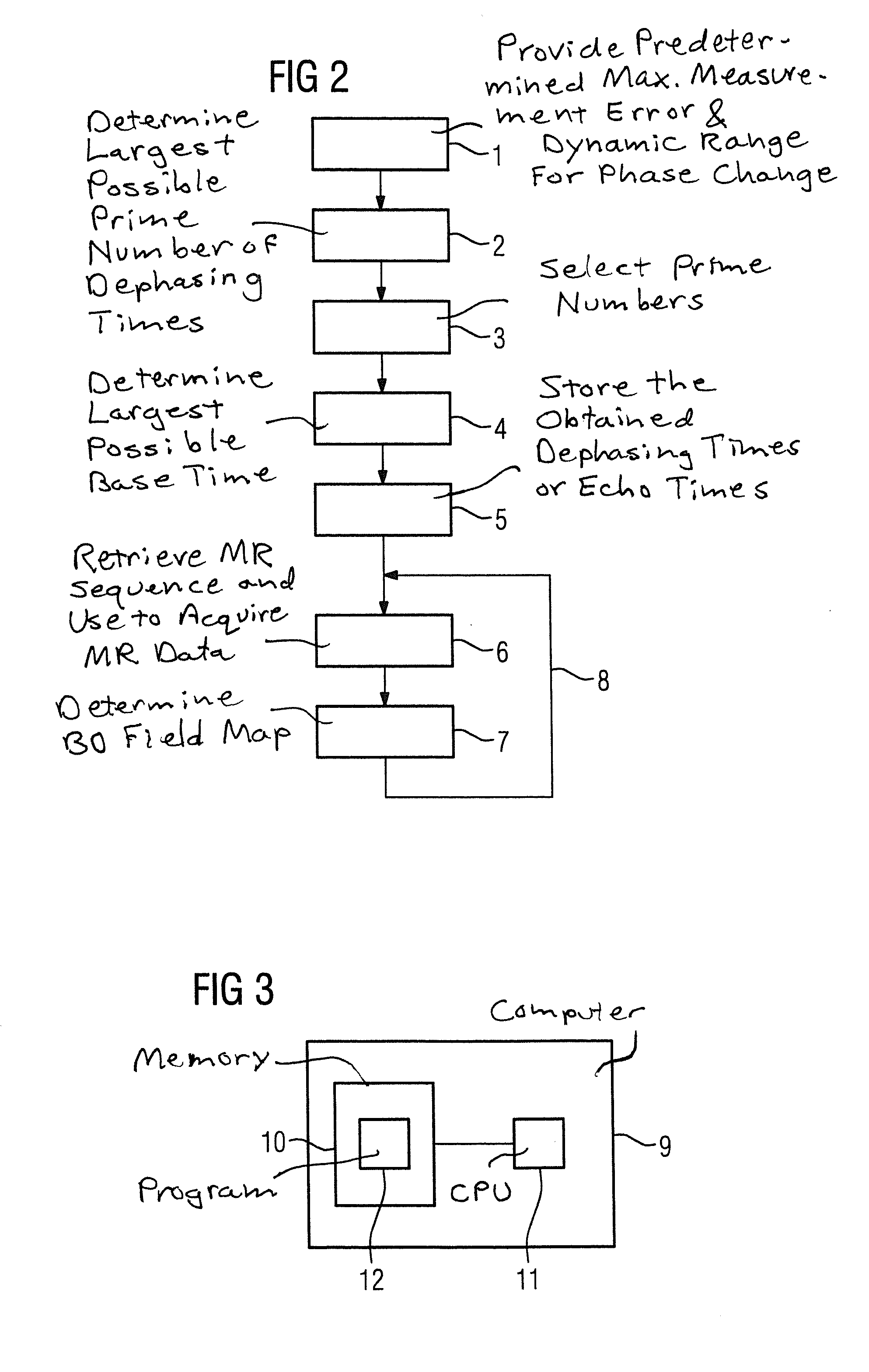Method and computer to determine a b0 field map with a magnetic resonance apparatus
a magnetic resonance and field map technology, applied in the field of method to determine a b0 field map, can solve the problems of inability to select extremely short dephasing times, ambiguities and errors in the calculation of b0 maps, and inability to measure the deviation of small deviations from the nominal larmor frequency with sufficient precision
- Summary
- Abstract
- Description
- Claims
- Application Information
AI Technical Summary
Benefits of technology
Problems solved by technology
Method used
Image
Examples
Embodiment Construction
[0047]The present invention concerns the selection of suitable dephasing times given a measurement of B0 field maps using multiple different dephasing times. Ideally, an increased dynamic range should thereby be provided without losses occurring with regard to scan time and precision if it is compared with a highly precise measurement of a B0 field map with large echo spacing. Therefore, additional echoes are to be specifically selected and analytically derived echo times are measured, wherein the remaining B0 field map is reconstructed with a probability-based access. This, and the bases of the considerations, are explained in detail using FIG. 1.
[0048]In this, probability density functions PΔTEi are shown that reflect the probability that a defined frequency is the resonance frequency (Larmor frequency) of the corresponding voxel. The probability density functions clearly have a defined periodicity that is based on the Nyquist phase wrapping. The function Peff shown below in FIG. ...
PUM
 Login to View More
Login to View More Abstract
Description
Claims
Application Information
 Login to View More
Login to View More - R&D
- Intellectual Property
- Life Sciences
- Materials
- Tech Scout
- Unparalleled Data Quality
- Higher Quality Content
- 60% Fewer Hallucinations
Browse by: Latest US Patents, China's latest patents, Technical Efficacy Thesaurus, Application Domain, Technology Topic, Popular Technical Reports.
© 2025 PatSnap. All rights reserved.Legal|Privacy policy|Modern Slavery Act Transparency Statement|Sitemap|About US| Contact US: help@patsnap.com



